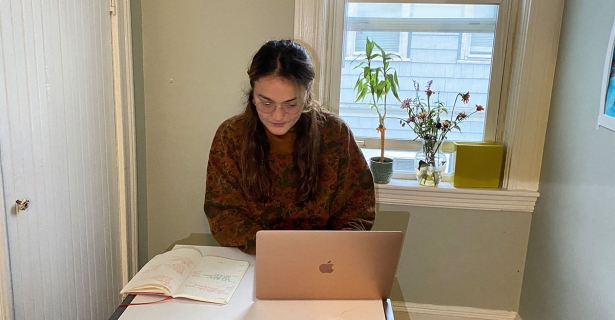Two weeks ago, I began my remote work as an Oslo Scholar with the Albert Einstein Institution (AEI). AEI is a nonprofit that specializes in the study of strategic nonviolent action and communicates nonviolent methodology to movements and activists around the world.
I began my work with an understanding that my tasks would change rapidly, and my main job would be supporting the work of AEI’s Executive Director, Jamila Raqib. I created briefings on the political context of countries with which Ms. Raqib was in contact. Ms. Raqib uses the briefings compiled by her interns to advise activists that have contacted her on the safest actions, guided by the teachings of the late Dr. Gene Sharp, the Institution’s founder.
My first week was spent on briefs and organizational tasks; however, after the killing of Breonna Taylor on March 13th, the emergence of a video of the February 23rd murder of Ahmaud Arbery, and the murder of George Floyd on May 25th, a global protest movement spread, seeping into every media platform. Quickly, it became the norm on a variety of social media platforms for individuals to post resources and news on Black Lives Matter protests, including locations of solidarity protests accompanied by words imploring followers to attend. Both Taylor’s and Floyd’s killings were at the hands of police officers; two more deaths in a long history of police killings, which serve to perpetuate the systemic racism at the root of all American institutions. While no amount of protest, public outrage, or arrests can bring back the Black lives lost, the Black Lives Matter movement and others like it are in pursuit of accountability and reform. They demand a change, or in some cases the abolition, of a system that has consistently worked against Black Americans. A large part of AEI’s mission is to train activists on nonviolent strategies of change. As I understand it, successful nonviolent action identifies and disrupts sources of power by using one or more of the 198 methods of nonviolent action that AEI has identified.
Naturally, as protests spread, my work with AEI shifted. The other intern and I compiled notes and research on the current protests, including instances of known agent provocateurs, police tactics, methods of fundraising, and much more. Because those in power have recently been the ones inciting violence, it seems that Dr. Sharp’s methods would suggest that disrupting power in a meaningful way largely means disrupting economic markets and involves consumers taking back their power; which has yet to be widely applied in the movement to defund the police.
Based on my work with Ms. Raqib and AEI, I believe one of the most productive changes I can encourage will be through shopping at primarily black owned businesses and encouraging others to do so as well. If we are able to use our economic power to demand attention and change from the government, it seems Dr. Sharp’s methods of nonviolent action can greatly support the Black Lives Matter movement. The following is a directory for black owned businesses across the United States: https://officialblackwallstreet.com/directory/
Much of my work with AEI is focused on tracking the success of a movement’s tactics, necessitating a close reading of political scientist Erica Chenoweth’s statistical comparison of nonviolent movements to violent ones, and attempting to connect these principles to current global movements. Connecting all of these various topics, I recently finished reading a 2015 article “New Directions in Protest Policing,” written by Edward Maguire in response to the protests surrounding Michael Brown’s death in Ferguson. Through my research for AEI, I have learned about the evolution of protest policing in the United States as well as the four basic principles intended to guide American police in the future: education, facilitation, communication, and differentiation. I predict that throughout the rest of my time with AEI, I will be monitoring the actions of American police forces and how this affects nonviolent movements both in the United States as well as global solidarity.

